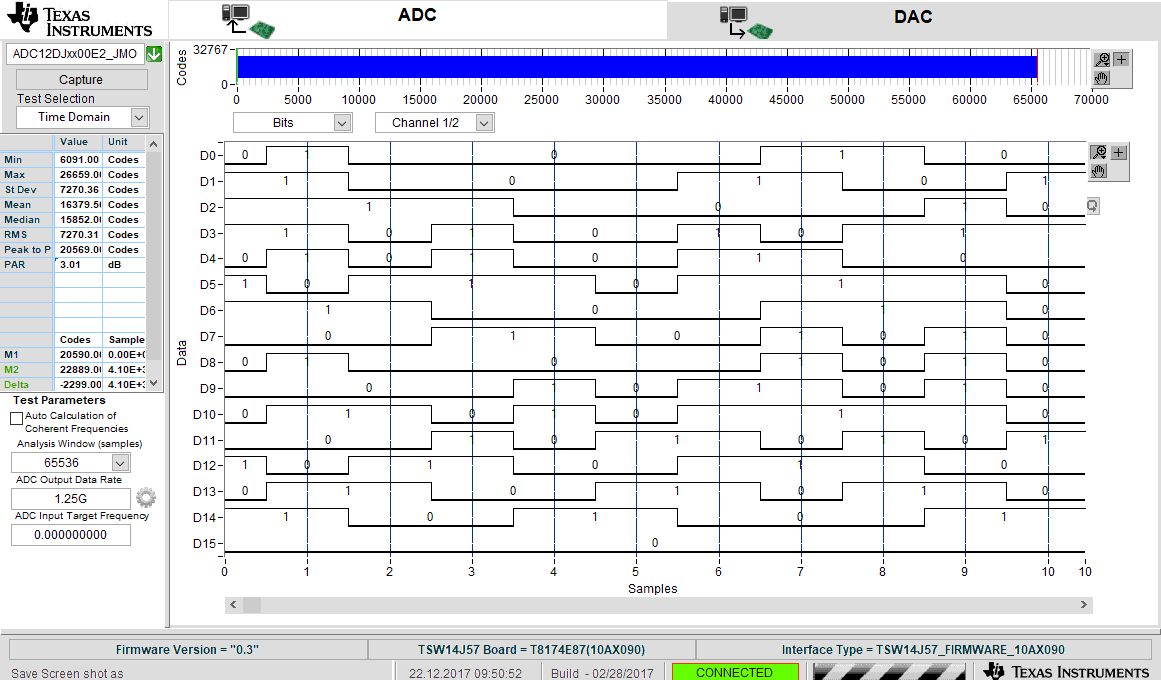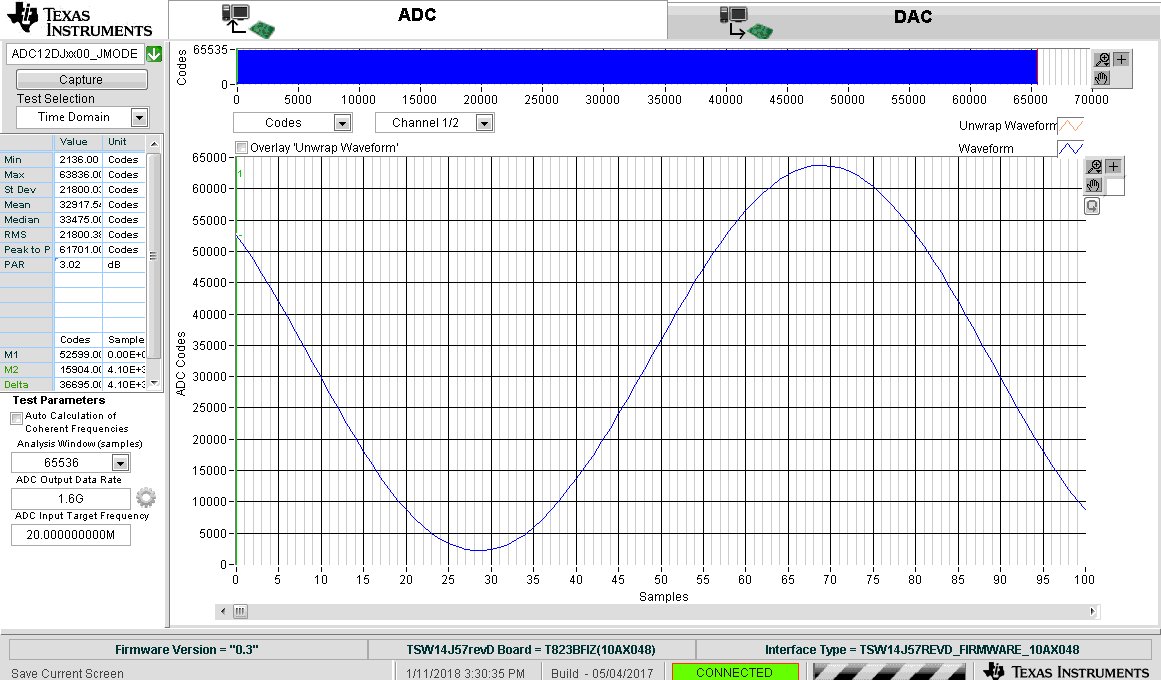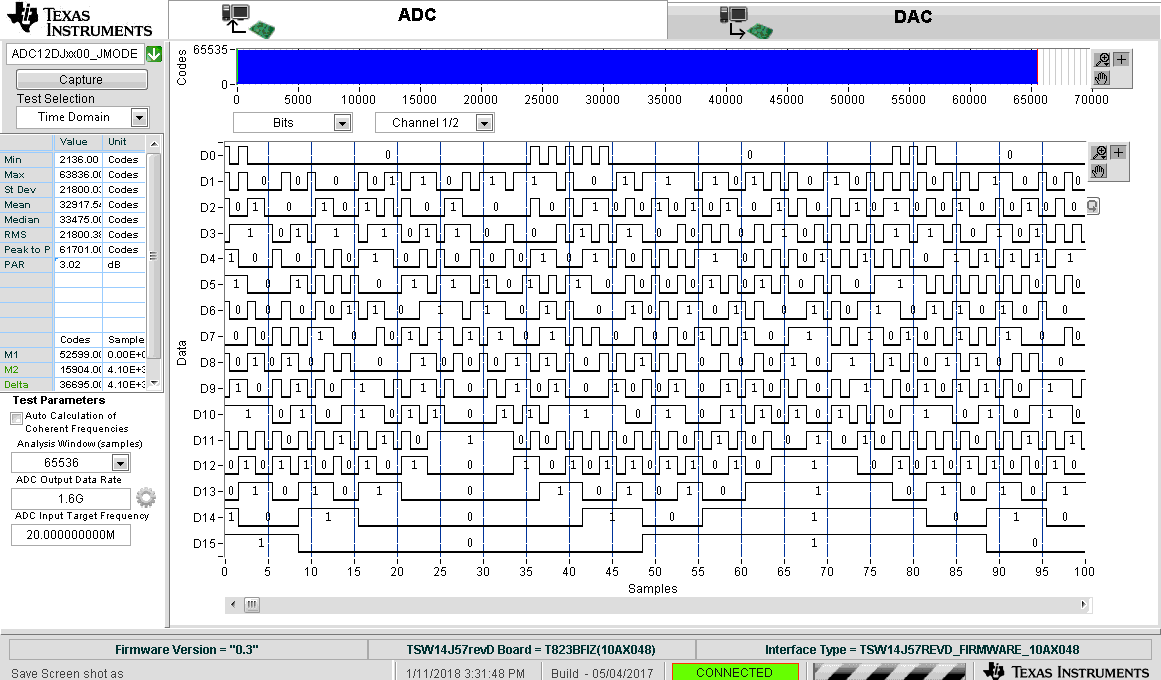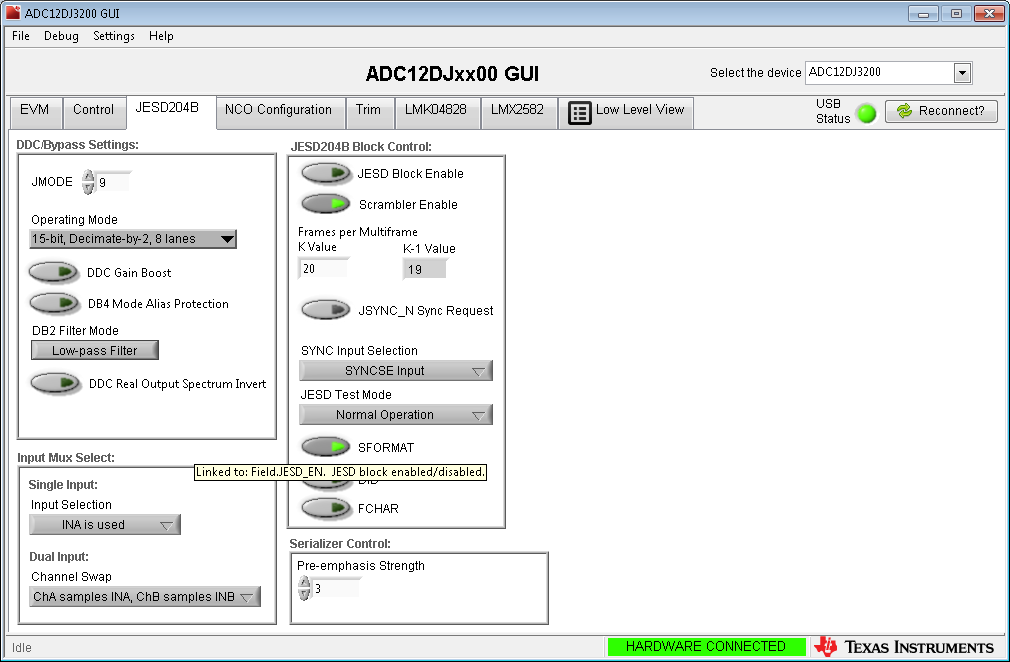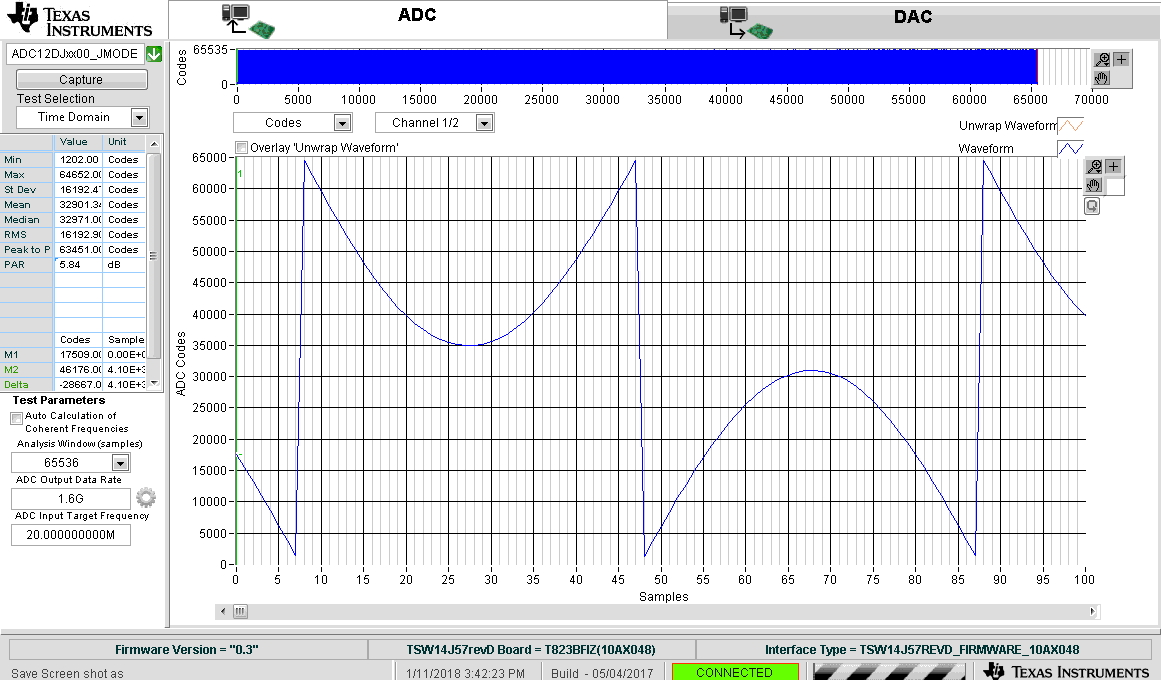Other Parts Discussed in Thread: , TSW14J57EVM
Hi to all,
i run the ADC12DJ3200 in JMODE9 and I'm wondering about the output format.
How is it defined in JMODE9?
If I export the raw-data file in HSDC-Pro I get decimal values that are quite bigger than the ADC-resolution (12 bits) allows.
I also don't understand the HSDC-Pro output format in bits. Why are in JMODE9 15 transfered bits and not 12 or even 13, if two's complement is used?
How can I convert the output data in bits into decimal values? Which data format and and how many bits are used in JMODE9?So can you please provide more information about the output format of the ADC12DJ3200 and the HSDC-Pro? In best case for all available JMODE9 settings.
My measurement setup includes the ADC12DJ3200EVM Rev. E3 and the TSW14J57 capture board rev. B. At channel A I applied a sine signal with fin = 300 MHz.
In the attachement, you can find the register settings, and the HSDC-Pro exports.
Thank you very much for your help.
Best regards,
Paul Rott


